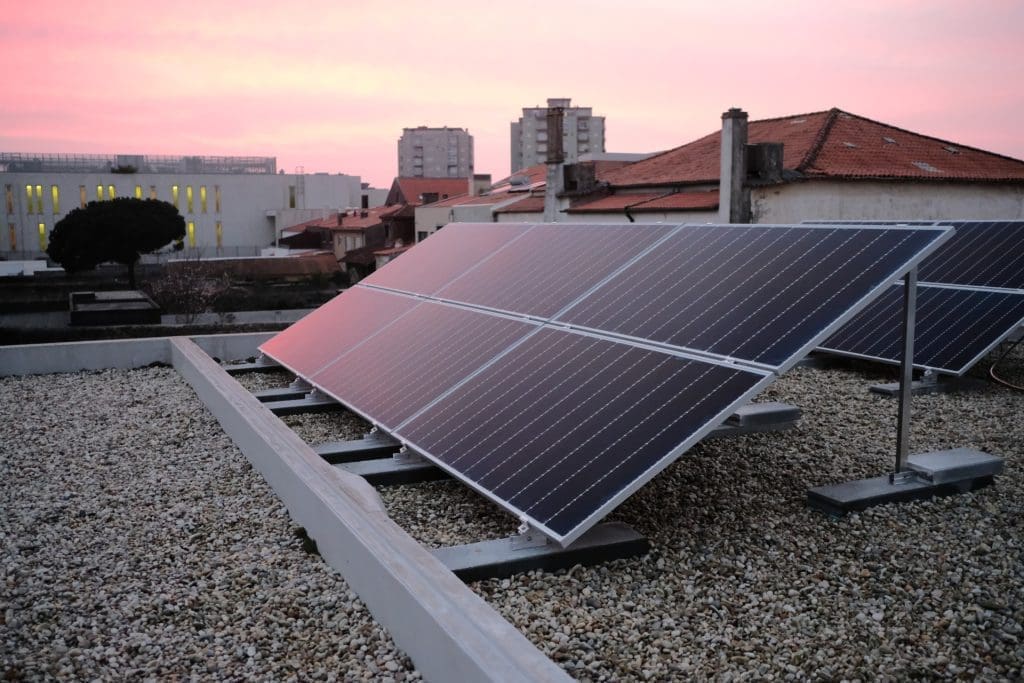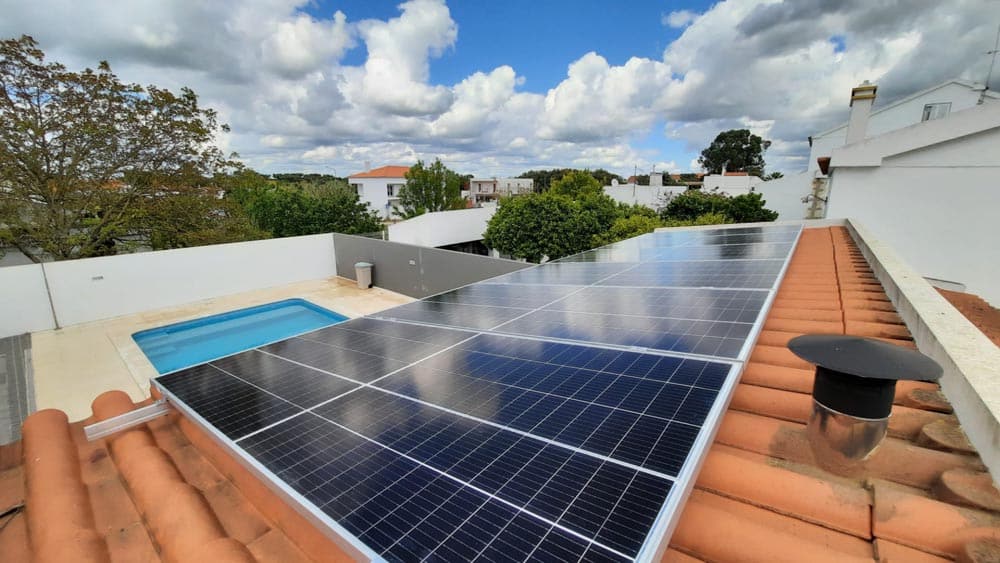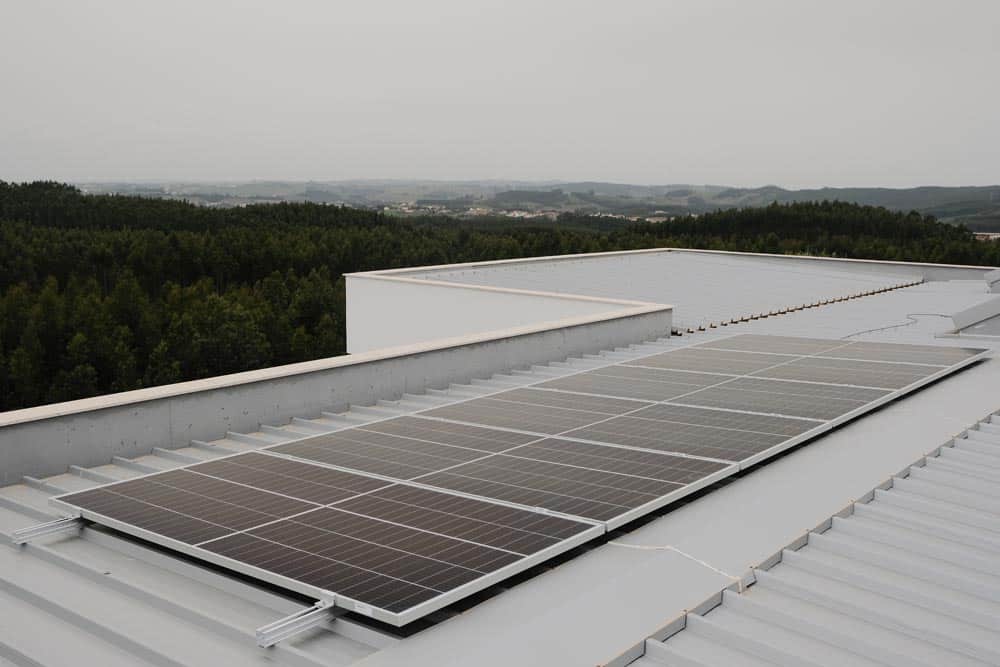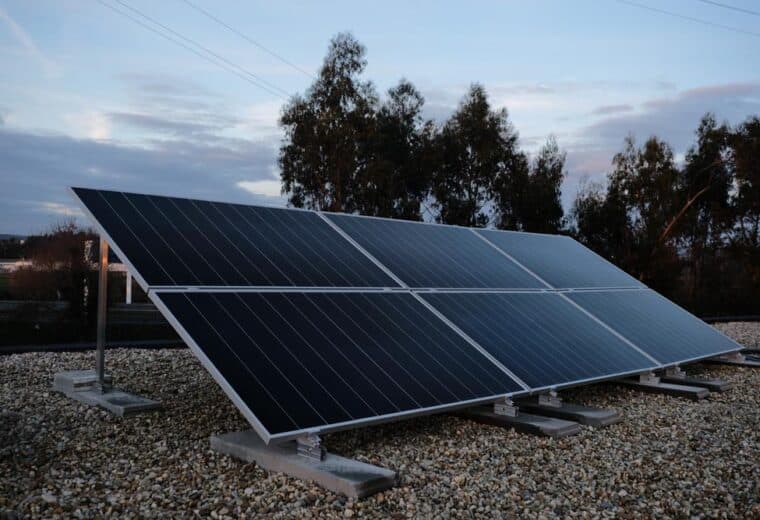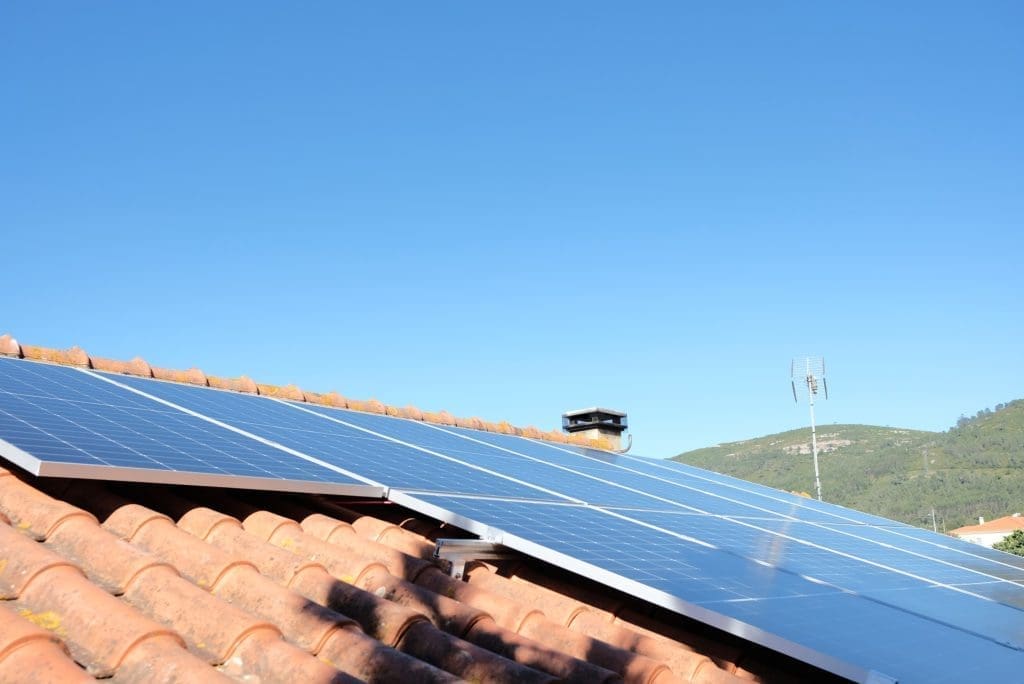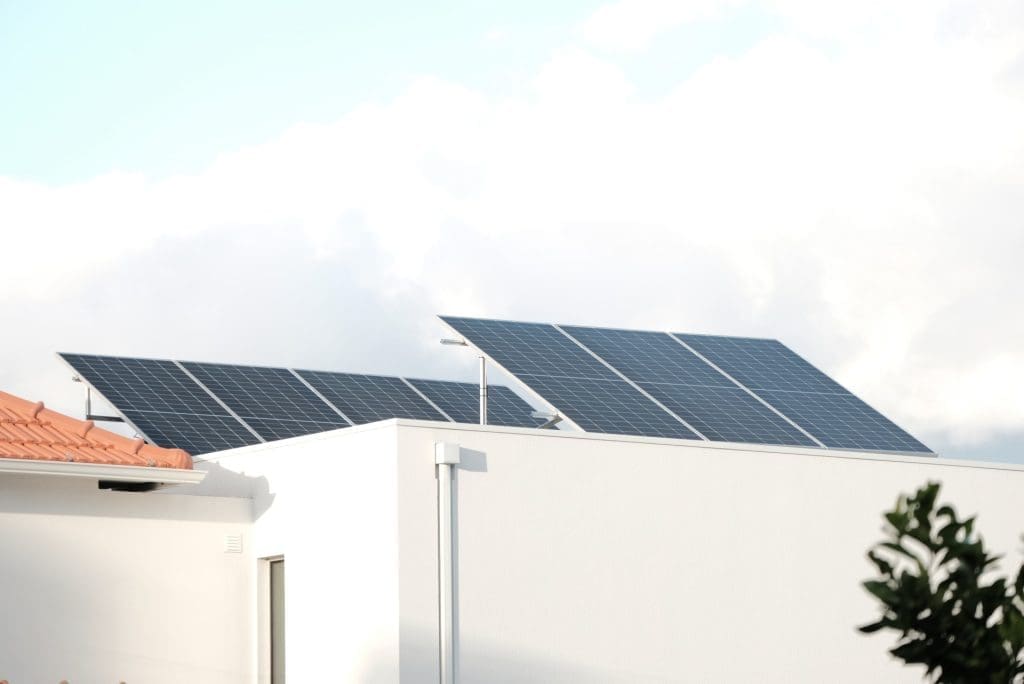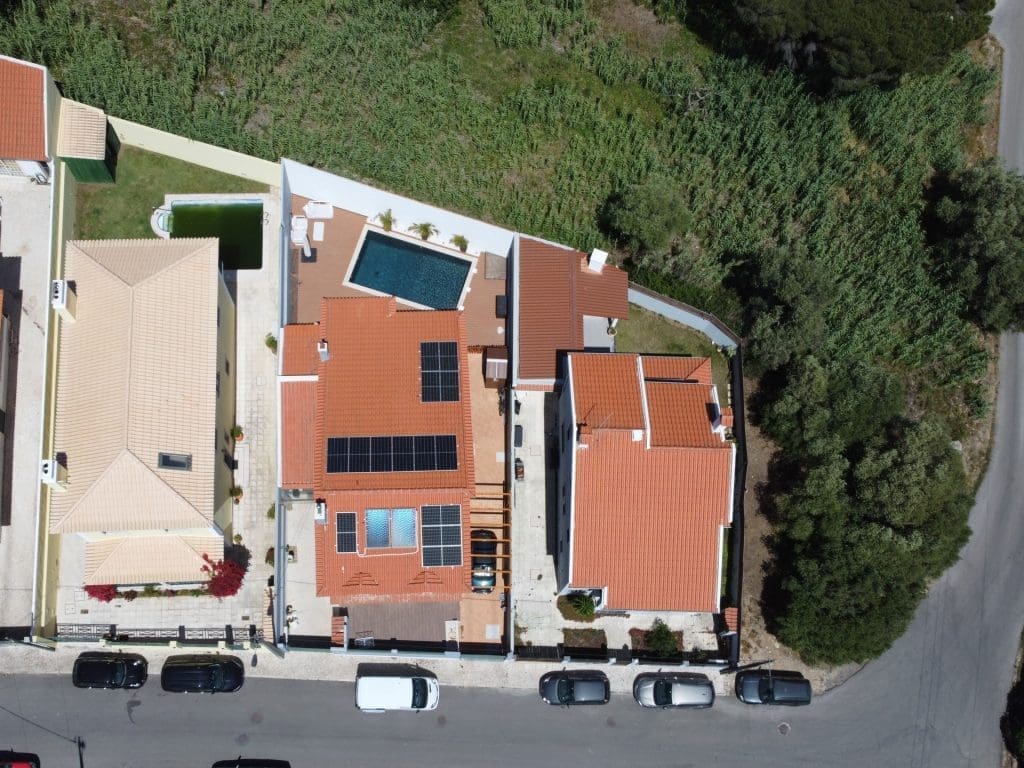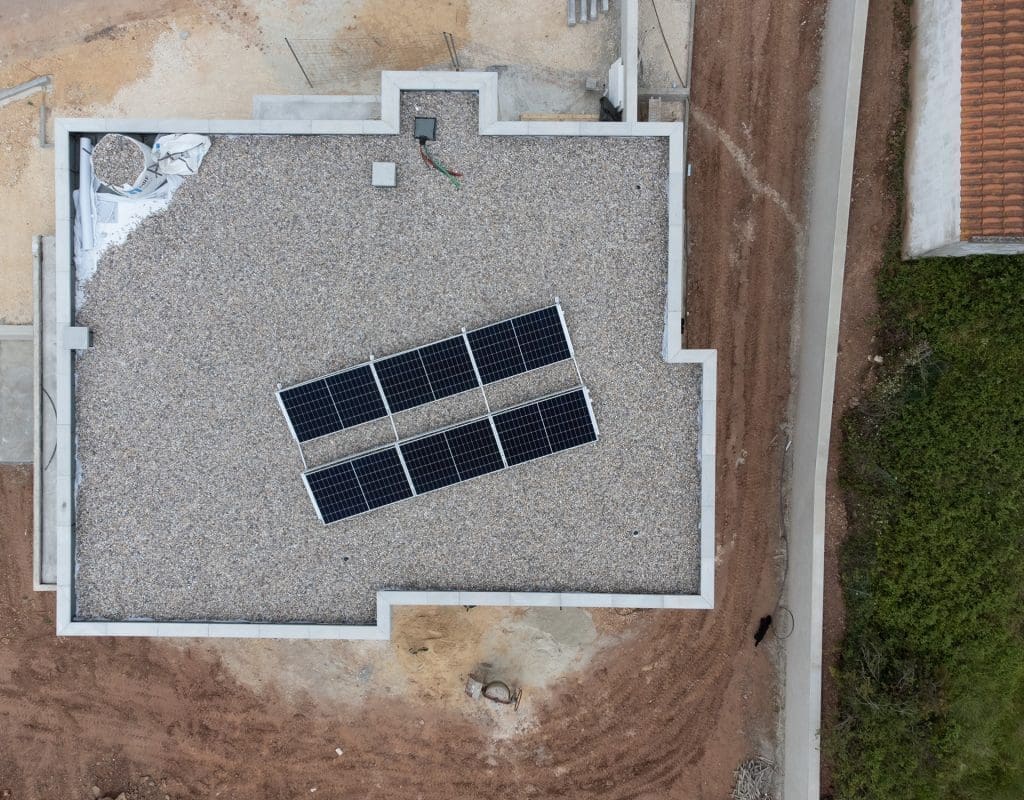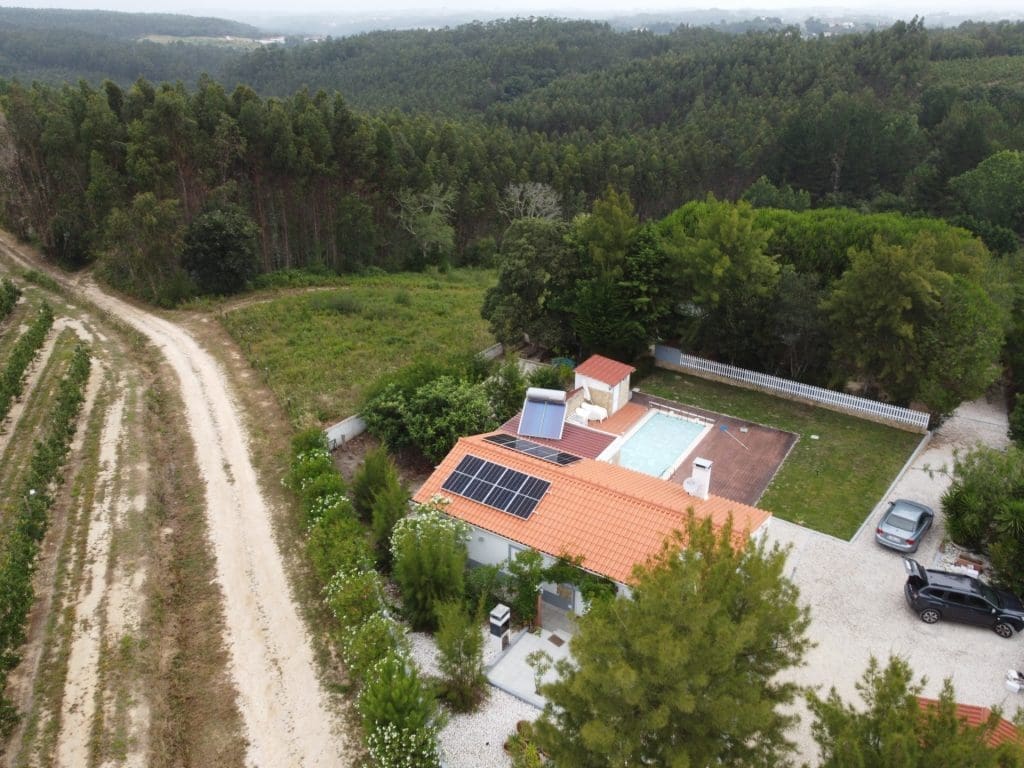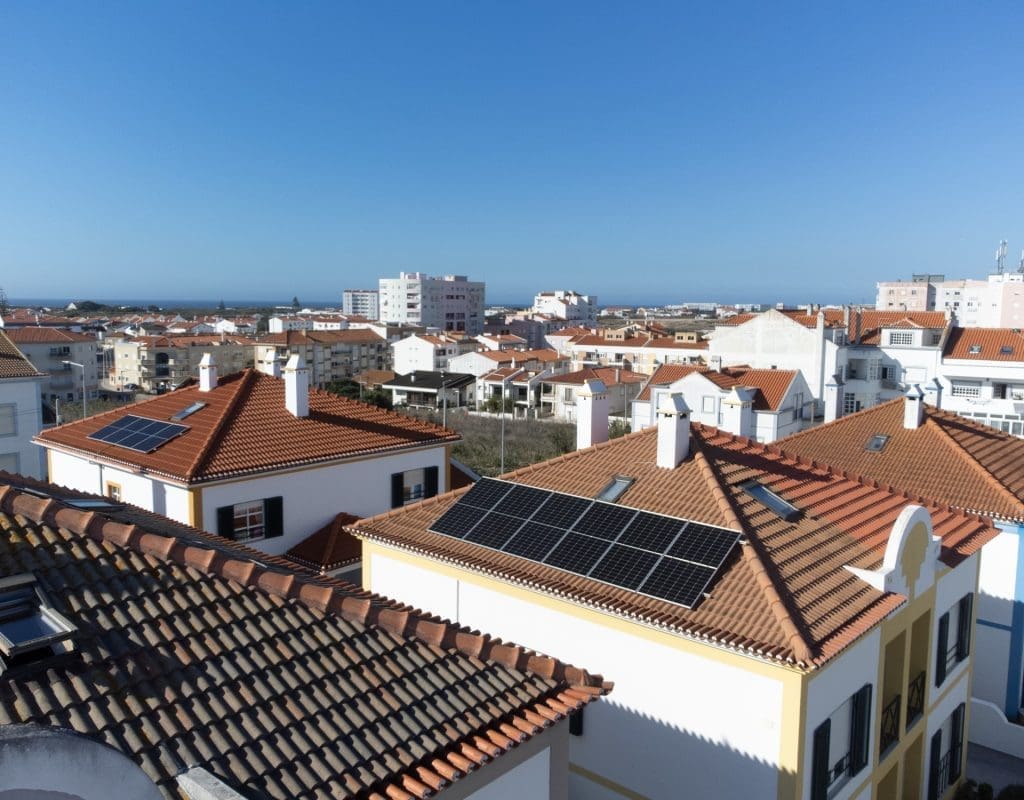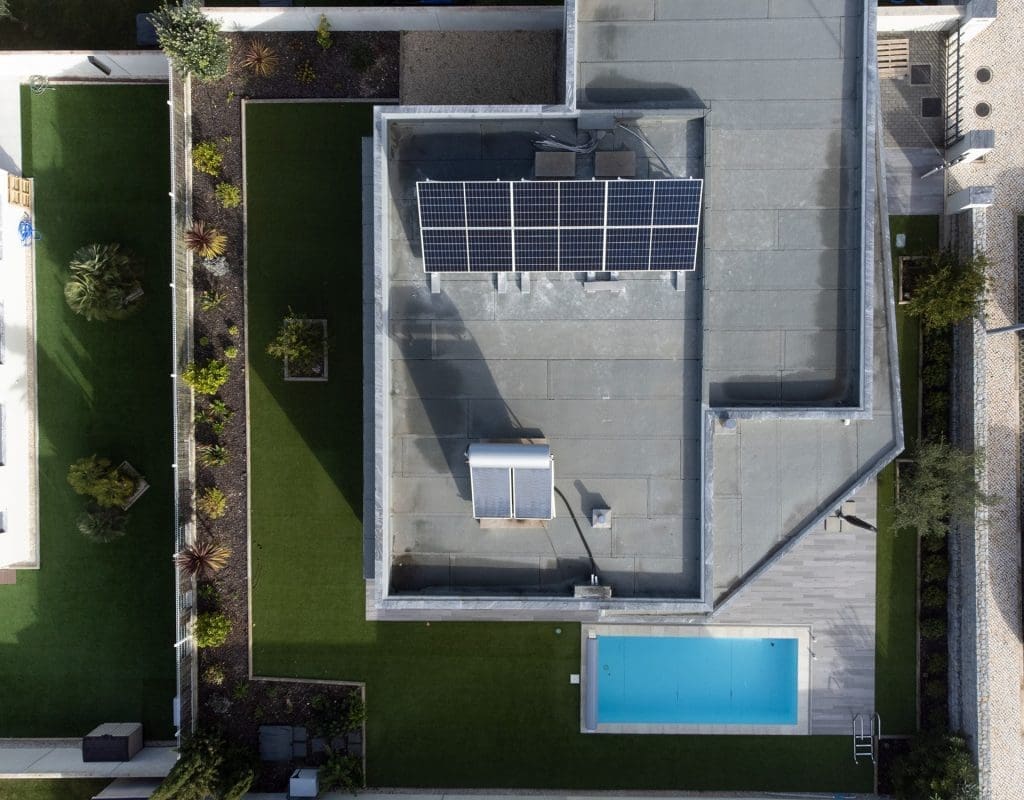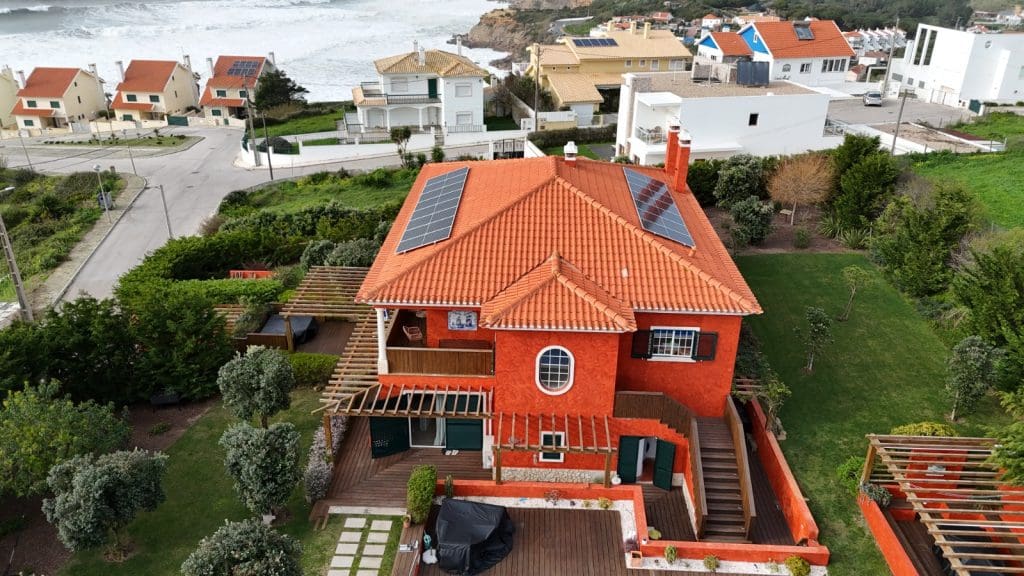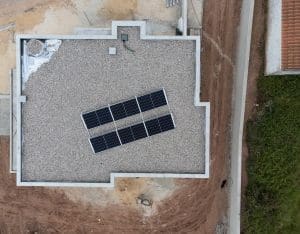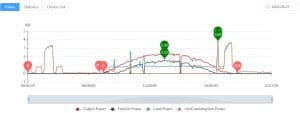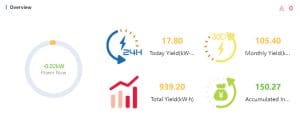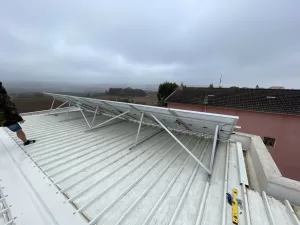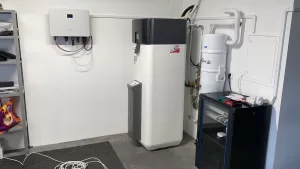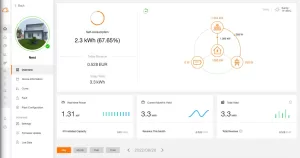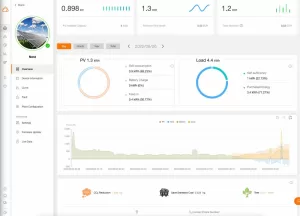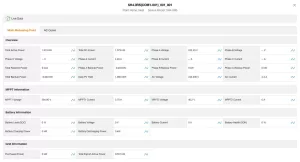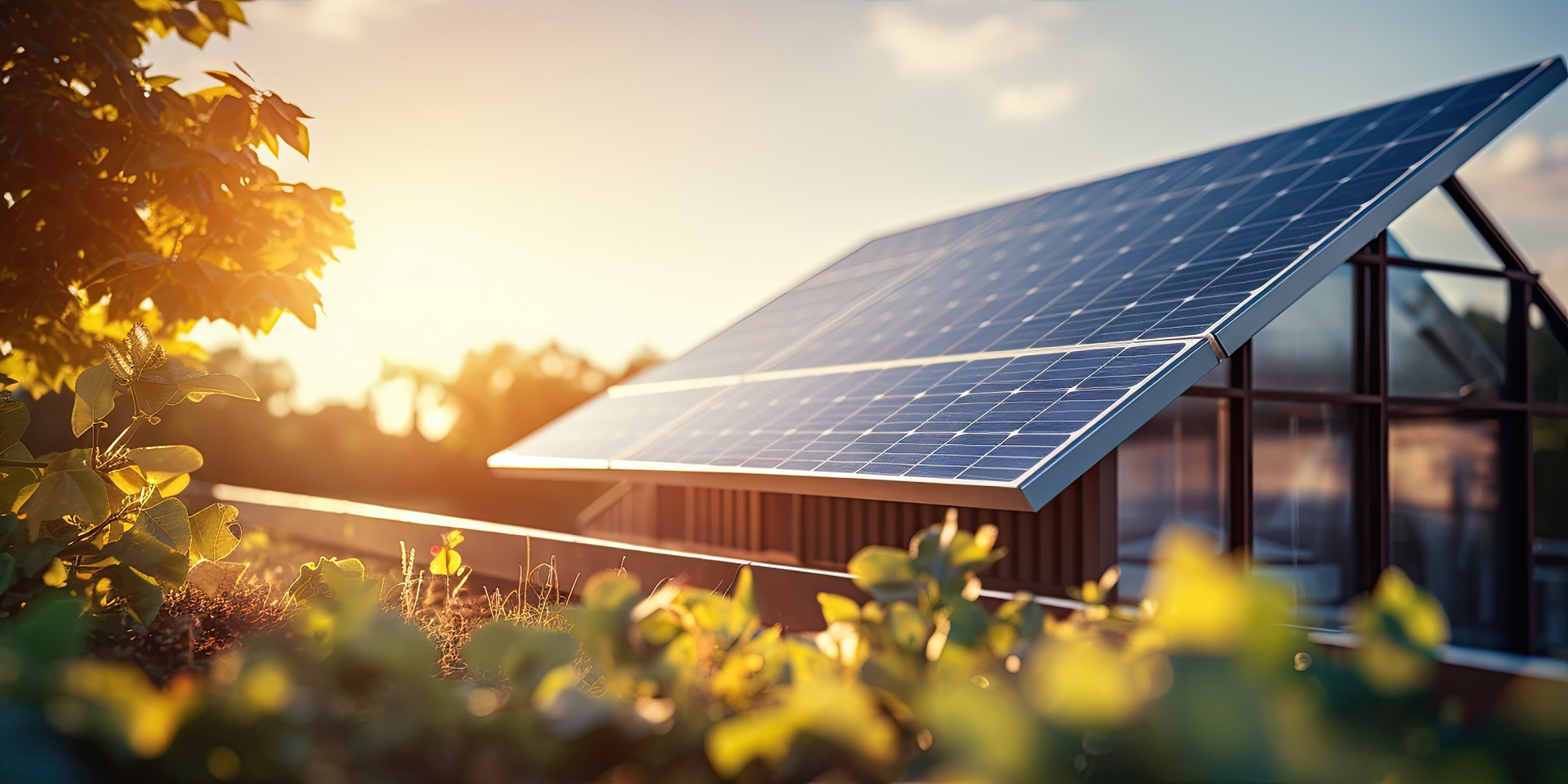
Portfolio
Many families and companies have already started saving and becoming energy free, independent and sustainable
We are your trusted partner for energy freedom and sustainability
SucessCases
2.7Kw Self-consumption Production Unit
installed in Caldas da Rainha
-
House Features
Roof: Flat
Sandwich panel -
Installation Features
Installed capacity: 2,7kWp
Panels: JCanadian HiKu6 455W
Inverter: Fox-Ess H1-3.7-E
Structure: Ballasted inclined support 29H(2F6M)
Protections:Maxge AC Discharger, Hager AC Circuit Breaker with neutral cut-off, Maxge DC Discharger, Hager DC Fuses
Vasco Neves was recommended to me by a friend. I'm honestly pleased to be able to repeat the recommendation based on the work that have been done for me in 2023 and again in 2024.
Based on my wishes I promtly received two detailed offers for solar systems. A basic system and another with better possibilities to add solar panels and batteries. All parts is from known quality brands with good warranties.
Based on my wishes I promtly received two detailed offers for solar systems. A basic system and another with better possibilities to add solar panels and batteries. All parts is from known quality brands with good warranties.
I have a background in airplane maintenance and my son is the manager of a 30 man strong technical solar installation department in The Netherlands, looking at my installation on the roof and inside, top quality work have been done.
Due to the delay in building my house the solar panels was installed 6 months before the rest of the system. This was no problem for Vasco Neves and I only received a bill for the work performed and the equipment delivered. Thru the whole process I have received prompt answers and appointments have been solid.
Right a the beginning the system twice had a software problem, which was fixed remotely, as promised, at the end of the day.
As you can tell I believe in a detailed feed-back, let it be a positive or a negative feedback!!
3.81Kw Self-Consumption Electricity Production Unit
installed in Ericeira
-
House Features
Roof: Flat (2º)
Sandwich panel
House orientation: +- 200º -
Installation Features
Installed capacity: 3.815kWp
Panels: JA Solar JAM72S30 545w
Inverter: Sungrow SH4.0 RS
Structure: Izi Walker in aluminum, triangular
Protections:Maxge AC Discharger, Hager AC Circuit Breaker with neutral cut-off, Maxge DC Discharger, Hager DC Fuses
We currently work from home, we have an EV and a hybrid vehicle and therefore my main use case was to have a system that would allow me to minimize consumption during the day, have the chance to install batteries in the future if I change the EV and use the surplus to either charge the vehicles, or for sale, pending spending a year with the system installed and seeing if it pays to put in a battery.
I started by investigating the market on my own in terms of panels, inverters and batteries, doing some math and selecting a small number of options for which I wanted quotes. At the time, I had a preference for SMA (if it wasn't a hybrid system) or Goodwe (if it was a hybrid system). In terms of panels, I had a less formalized opinion, although the choice would always be Tier 1 and JA Solar seemed well positioned.
Based on what I selected, I did what I think everyone does: I sent an email asking for quotes for these solutions and waited for a reply.
I can tell you that I've heard a bit of everything, without listening to two people with the same feedback and opinion. Note that I'm far from being an expert in solar energy, but I heard a lot of things that I found completely wrong and that didn't even make sense from a technical point of view. From people who thought that low-voltage batteries were all lead, to people who wouldn't install triangles on a sandwich panel, to people who defended high-voltage batteries but didn't even know why, to companies who felt like they wanted to “shove” Huawei down my throat because it was the only thing they wanted to install and that it was the best thing in the world, who told me that Tier 1 panels are all the same, SMA or Chinese inverters are all the same or who almost insulted people who wanted 500w+ panels.
Well... taking a deep breath after several conversations and with the proposals in hand, stopping to reflect.
Let me tell you that none of this surprises me - the fact is that a lot of people have started installing solar panels to take advantage of the high demand for the environmental fund and maybe the experience is relatively small. My recommendation here is: always spend a few hours doing your research. Only then will you be able to ask the right questions and understand whether those on the other side are aligned with what you are looking for.
I also want to make it clear that I've had some excellent conversations, with people who, regardless of whether or not I hire the service, have been incredibly willing to discuss solutions and pros/cons. There are still good people.
WHY SOLAR FV ENGENHARIA?
For various reasons and not one in particular, but in a nutshell, they answered me in less than 24 hours consistently, whenever we exchanged emails. They returned my calls when they couldn't answer. They replied to my email with quotes - amazingly, for what I had asked for - and not with Huawei, Solax, Growatt or other brands. Not only did they send me the quotes I asked for, but they also willingly sent me 4 more with other panels/inverters for comparison. They charged prices that I considered acceptable, i.e. paying a fair price for the material, and not charging €350 for a panel that I could go to a store and buy directly, with VAT, for €270. Above all, and finally, I felt that they respected me as a consumer and gave me solutions for what I wanted, e.g. “do you want SMA? here's the quote” “do you want 500+w panels? here's the quote” “do you want inclined structure? here's the price. is it expensive? I'll look for another brand and try to send it to you”.
Ladies and gentlemen, this is worth gold to me. Having someone who responds quickly gives me the confidence that if I ever have a problem I won't have to wait a week for an answer and, above all, feeling that they have always tried to find the best solutions for what I want has been really decisive. I'd also like to warn those who go for more “mainstream” solutions such as Solax, Goodwe, Growatt and the like: for the same panels, same inverter, similar powers, I've seen prices between €1.20/w and €2/w. Do your research well and, above all, know what you're paying for what you're buying.
AND AFTER THE AWARD
This is where things got complicated. At the time, we had closed the deal with JA Solar and a Goodwe 5048-ES, but the Goodwe had to be 14A DC because if you look at the specifications of the panels in this power house, they all operate at around 13A DC and most inverters on the market are limited to 11-12.5A DC. A lot of people here will tell you that this is precious and that the panels will rarely operate at their power limit, but let's be honest, do you think it makes sense to buy material that is “limited” from the outset? Not in my mind. And this is where we lost some more time. Solar FV contacted me to say that the supplier had mistakenly sent them a quote for the Goodwe ES 11A (the standard) and not the 14A and that they couldn't get the 14A, but that they would try to find a solution. Fine. Note that I had already paid the deposit for the contract. And now's the part where you think “eish, you've run out of money, it went really badly, etc”, but no. As soon as I'd paid the deposit, Solar FV ordered the panels directly for delivery to my house, which in themselves cost more than the deposit (I thought this was an incredible act of trust!) It did the same with the structure.
And then it was a question of finding an inverter. We still had time to exchange the panels for the S20 series, which operates at 11A, but I wanted the S30 series (it's 11BB, more heat-resistant, newer manufacturing technology, higher efficiency, less thermal loss, etc., and no, it's not just because it's more powerful, guys!) and again, Solar FV respected the request. We looked at various alternatives, but the real difficulty was finding a hybrid inverter that could handle at least 14A DC. SMA inverters above 3kw can handle 16A... but they're not hybrid. Three-phase inverters typically do... but we needed a single-phase inverter. So we started looking at alternatives such as Deye (but it didn't inspire much confidence...), Turbo Energy (strangely similar to Deye), some Growatt that support 13.5A (not ideal but possible) and finally, after some research in the Australian market (which as you know is a benchmark in solar) I arrived at Sungrow. Now, Sungrow is a very interesting Asian brand (which is said to have bought much of SMA's know-how), but which has a very significant track record of success, performance and lack of problems.
Several reviews I saw from Australia (because there isn't much information about sungrows) put growatt and solax on one level, goodwe and huawei on a higher level and put the sungrow on a completely different level from the previous ones, on a par with Fronius, which for them is - THE - reference. One of the companies claimed to have installed more than 800 Sungrows without a single problem in recent years. I found it so interesting that I went to check it out. And yes, they have some very interesting features that I invite you to get to know. Above all, it solved my problem because it accepts 16A DC x2 MPPTs. For those who are curious, a 9.6kwh Sungrow battery is the price of a 5kwh Huawei battery and the Sungrow will provide more than 6kwh AC from the battery, whether it's the 3, 4 or 5kw version (because yes, my dear, Huawei has hybrid inverters for 1000 euros, but then don't forget to look at the price of the batteries, the backup box, the UPS switching times, the charging/discharging powers, the DC limits, the efficiency.... ... in short, I have my own opinion of Huawei, but it's relevant in this context).
Analysis done, I think I've ended up with a fantastic solution, which includes recent panels with very good performance, a very interesting inverter, the ability to put in HV batteries at the price of Pylontech LV and with a monitoring system that includes a meter and a platform with lots of information. I have Solar FV to thank for supporting me in researching and acquiring material that is new/unknown to many people and for not giving up or trying to force something else halfway through. Perhaps this is the difference in having two electrical engineers, with a degree and a master's degree, running the company.
INSTALLATION
Overall, it went well. It was long. It lasted two days. For various reasons: it rained, the weather in general didn't help, extra care had to be taken to assemble the structure because it was in a sea area and it was quite difficult to run cables through the existing pipes. This inverter already includes protections for everything and anything, and even so we took great care to install additional, well-sized AC/DC protections. All the cables were tidied up. We touched up the walls where holes had been drilled. We vacuumed up the cable ends left on the floor. Note that I had warned them that we would be going on vacation in the meantime, and so as not to leave the job half-finished, on the second day Solar FV left my house after 11:45. At the end of the job, as they had used a conduit I had at home that I needed to run some wires through, they left me two new ones and even deducted some of the material they hadn't used from the final price. They didn't charge any more for the protections/circuit breakers with a higher capacity, as they were initially sized for 16A and ended up with a 3.8kWp system.
AND ONCE INSTALLED?
I'm happy! I ended up with the solution I wanted. I could have opted for slightly different panels to get the 4kWp just right, but it's not dramatic. The 4kW inverter is well dimensioned because one day when I want to go above 4kWp it will never be just for another 500 or 600w to absorb the cost of the additional meter needed.
It's been a rubbish couple of days, but yesterday I saw production hit 4kw at peak! The inverter is spectacular and super configurable. The structure is solid and the system works well. I think it was a good bet on a brand that's less well known around here. Let's see how it performs. Sungrow's platform has information that never ends and can make graphs for a lot of things and gives information in near real time, with 10s of difference (something that is quite different from other manufacturers). Bear in mind that it's not a cheap inverter.
So, it's a long text, but it tells the story of a research and installation adventure that began a year ago and which, with the price deregulation that has taken place in the meantime, has only just ended. I'm glad we didn't get the 14A Goodwe. That's another championship. If all goes well, next up is a wallbox with dynamic load balancing and use of surplus photovoltaics. The idea is to start the car and use the surplus to charge the battery. If there's any left over, it's for sale!
A thank you to Solar FV. They were incredible partners on this adventure.
I wish them all the success!
Note the use of the word partners - it wasn't random...
I wish them all the success!
Note the use of the word partners - it wasn't random...


